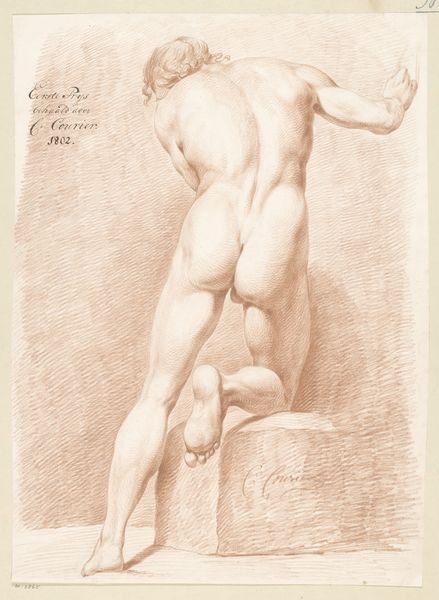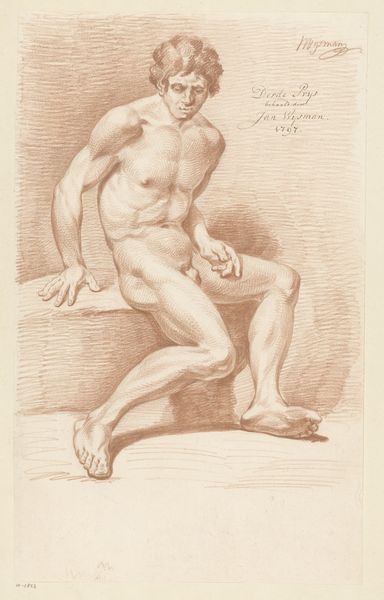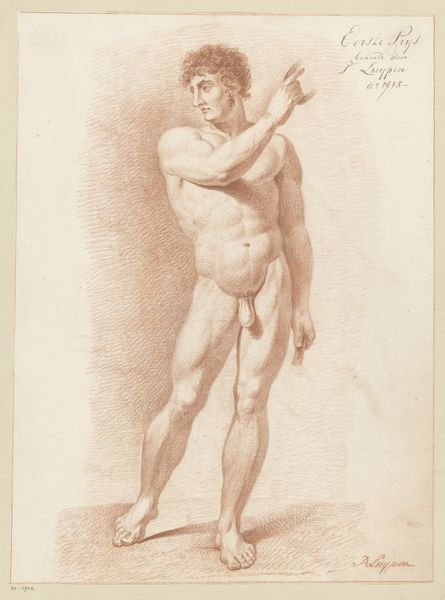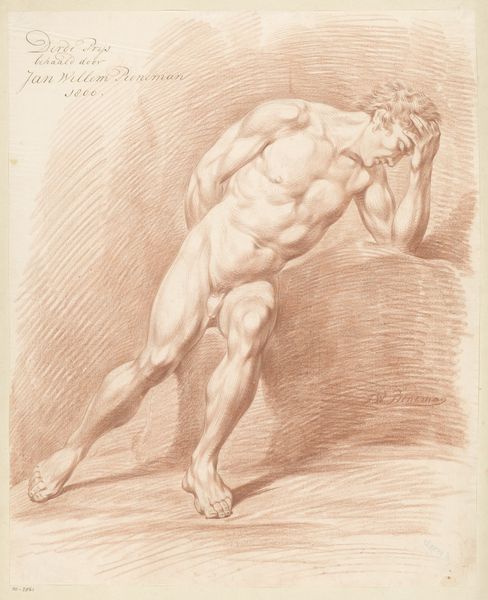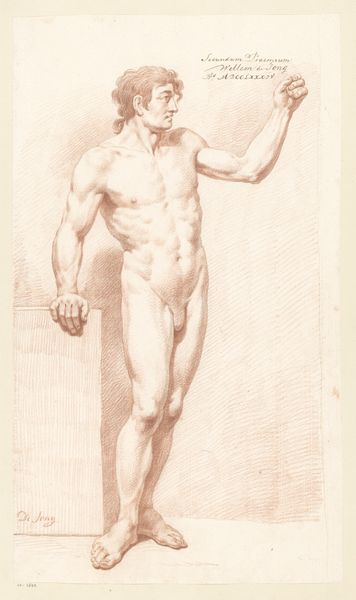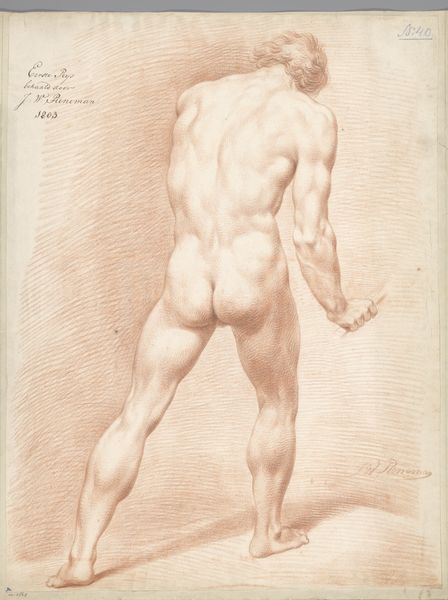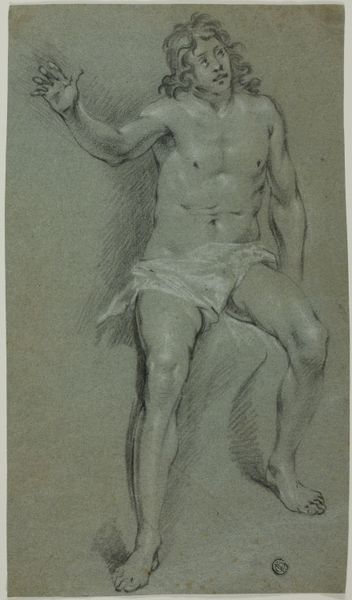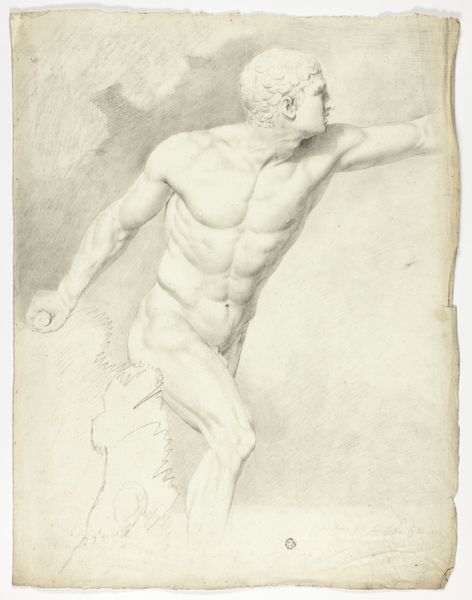
drawing, paper, pencil
#
drawing
#
neoclacissism
#
paper
#
pencil drawing
#
pencil
#
academic-art
#
nude
Dimensions: height 556 mm, width 414 mm
Copyright: Rijks Museum: Open Domain
Curator: We’re looking at "Standing Male Nude, Seen from the Front" by Bartholomeus Ziesenis, created circa 1787, most likely a pencil drawing on paper. It exemplifies neoclassical ideals through its subject and form. Editor: It strikes me immediately by its tonality. The sanguine wash gives the figure and the grounding forms this really compelling depth and musculature. Curator: Indeed, the use of a monochromatic palette heightens the drama, very much in line with the period's aesthetic sensibilities which revived classical principles. Male nudes were seen as potent carriers of moral and civic virtues. The artistic circles then deeply revered ancient statuary as expressions of ideal beauty and heroism, aligning them with the ethical dimensions of leadership. Editor: The pose certainly directs the viewer’s gaze in an upward vector: notice the raised, tense neck and the upward gaze, it all suggests aspiration. What really fascinates me is the contrast between the figure's smoothness and the craggy textures he leans against. The very refined handling of line is something I am sure the academicians were really pressing onto the students during the time it was drawn. Curator: Precisely. Figures like these held immense pedagogic value in academic settings. Drawing after plaster casts and live models was central to the education of artists; fostering rigorous training in anatomy and form while, embedding a particular socio-political understanding about the ideal. The academies saw themselves shaping a national visual language. Editor: Looking closer, there’s also some use of shadow play with really confident contouring along the abdomen, drawing one’s attention and enhancing its physicality. A solid application of form. Curator: So true! Its formal composition is certainly noteworthy, especially within its cultural moment, embodying then, more than merely depicting. Editor: It shows us, not only in terms of skill but context as well. After having discussed all that, the artist’s attention to proportion, structure and implied heroism—it all invites us to delve further, each with fresh eyes. Curator: Indeed, perhaps next time we could think about how his own identity as a prize-winning artist during his formative years at Amsterdam’s academy may have further influenced such detailed treatment of subject matter, which also brings up how artistic accolades can sculpt both aesthetics and artistry itself.
Comments
No comments
Be the first to comment and join the conversation on the ultimate creative platform.

